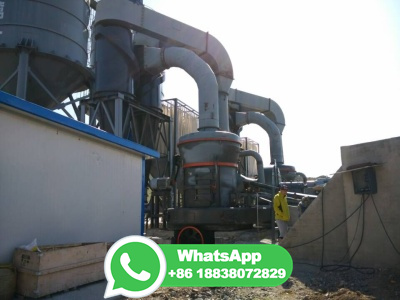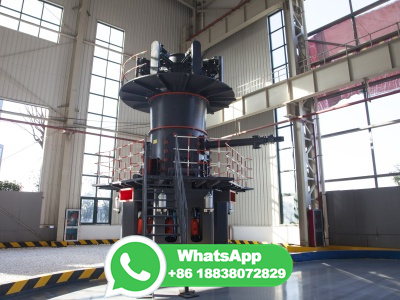
Abstract Ball milling was used to improve the dispersion of GO in a cement matrix in a planetary ball mill. Results indicated that the process had a negligible effect on the morphology of the GO but led to a % increase of the number of defects it contained.
WhatsApp: +86 18037808511
4) As the materials pass through the kiln their temperature is rised upto °C. The process of heating is named as "burning". The output is known as "clinker" which is cm in diameter. 5) Clinker is cooled stored. 6) Clinker is ground with gypsum (36%) to adjust setting time.
WhatsApp: +86 18037808511
The first Spanish Portland cement was made in Asturias. By 1909, tons of Portland cement were produced and in 1940, production reached 400,000 tons. Uses of Portland Cement. Portland Cement can be used for all kinds of constructions as it is compatible with practically all conventional construction materials.
WhatsApp: +86 18037808511
Portland cement is the basic ingredient of concrete. Concrete is formed when portland cement creates a paste with water that binds with sand and rock to harden. ... The rock then goes to secondary crushers or hammer mills for reduction to about 3 inches or smaller. The crushed rock is combined with other ingredients such as iron ore or fly ash ...
WhatsApp: +86 18037808511
Machine mixing should be used whenever possible. First, with mixer running, add most of the water and half the sand. Next, add the Masonry Cement and the rest of the sand. After one minute of continuous mixing, slowly add the rest of the water. Mixing should continue for at least three minutes; extending mixing up to five minutes improves mortar.
WhatsApp: +86 18037808511
The distinct types of portland cement are defined through ASTM C15022: Standard Specification for Portland Cement, which distinguishes them by purpose. The standard types of portland cement are: Type I for general purpose. Type IA same as Type I, but when air entrainment is desired. Type II for moderate sulfate resistance.
WhatsApp: +86 18037808511
Once the water and the powder mix, they react together and produce compounds known as calcium silicate hydrate (CSH), also known as cement hydrates. "Cement hydrates are small, on the nanoscale scale," says Tingtao Zhou, a PhD student in the Department of Physics and the lead author of the paper. "These are the building blocks of cement."
WhatsApp: +86 18037808511
Modified Portland Cements. Increasingly, modern concretes contain a blend of Portland cement and other cementitious materials. When other materials are added to Portland cement at the time at which the concrete is batched, they are referred to as mineral admixtures, which are described in detail in feature posts; however, there is also hydraulic cement, which is produced either by forming ...
WhatsApp: +86 18037808511
portland cement, binding material in the form of a finely ground powder, usually gray, that is manufactured by burning and grinding a mixture of limestone and clay or limestone and inventor Joseph Aspdin, of England, patented the basic process in 1824, naming it for the resemblance of the cement when set to portland stone, a limestone from the Isle of Portland.
WhatsApp: +86 18037808511
Feb 01, 2017· The set Portland cement was reduced to a fine powder in a planetary ball mill (PM 100; Retsch, molecular mass values from 1,800 to 27,000 Da (15) Newtown, PA, USA) and further sieved to exclude parti may be released from polymerized resin and function in cles larger than 50 lm in diameter. hybrid layers, we pretreated the ...
WhatsApp: +86 18037808511
Type III High Early Strength. Type IV Low Heat Hydration. Type V High Sulfate Resistance. For blended hydraulic cements specified by ASTM C595 the following nomenclature is used: Cement Type Description. Type IL PortlandLimestone Cement. Type IS PortlandSlag Cement. Type IP PortlandPozzonlan Cement.
WhatsApp: +86 18037808511
The transformation reaction taking place in rotary kiln is illustrated in From the fig left hand side is the feedstock comprising in this case are calcite (CaCO 3), low quartz (SiO 2), clay minerals (SiO 2Al 2 O 3H 2 O) and iron oxide (Fe 2 O 3).From 200 up to a temperature of about 700°C, activation through the removal of water and crystal structure changes take place, 700 to 900°C ...
WhatsApp: +86 18037808511
The result shows that the horizontal ball mill able to grind the calcium carbonate to a size of smaller than 100 mesh (149 µm). Topics. Materials synthesis and processing, Chemical compounds. ... Jet mill grinding of portland cement, limestone, and fly ash: Impact on particle size, hydration rate, and strength ...
WhatsApp: +86 18037808511
The closedcircuit grinding system of the ball mill is shown as follows: materials mixed in a certain proportion will firstly enter the cement ball mill for grinding and then be sent to the powder concentrator by bucket elevator. The powder concentrator divides the materials into coarse and fine materials.
WhatsApp: +86 18037808511
Ball Mills. Although ball mills were first introduced in the 1860's, the main progress was made during the 1870's to 1900's in Germany, where its growing cement and chemical industries ...
WhatsApp: +86 18037808511
Coal mill is the main equipment in the pulverized coal preparation calcining topgrade cement clinker requires a stable supply of coal powder as the fuel of cement kiln, and more than 85% of pulverized coal should be finer than 200 mesh, water content less than 2%, and calorific value more than 6000Kcal/kg, therefore the pulverized coal preparation system is one of the ...
WhatsApp: +86 18037808511
The flowsheet of the semiindustrial plant is shown in Fig. 2. Fresh feed and separator grits were combined and fed to the mill. The ball mill has an inside diameter (inside liners) of m. Its length can be varied by combining different tube shells with a length of 25 or 50 cm in the range of m. Fig. 3 shows the mill.
WhatsApp: +86 18037808511
Addition of 15 mg of Portland cement to 33 g of soil increased the pH to 6, and addition of 291 mg of Portland cement increased the pH to 9. The pH of soil amended with cement was stable for the first 5 months. After 10 months, soil pH values decreased from alkaline to near neutral in all cases. Eastern subterranean termite workers ...
WhatsApp: +86 18037808511
Steel balls are one of the most widely used grinding media in cement ball mills, their diameters can range from 20mm to 150mm according to different grinding requirements. In a cement ball mill, generally, φ50100mm steel balls are used in the coarse grinding chamber, φ2050mm steel balls are used in the fine grinding chamber. 2. Short Cylinders.
WhatsApp: +86 18037808511
In the manufacture process of cement, clinkers are formed. These cement clinkers are cooled down and added with small amount of gypsum. The mixture then sent to final grinding process. For ordinary Portland cement it remains between 3 to 4% and in case of Quick setting cement it can be reduced up to %. Role of Gypsum in Cement
WhatsApp: +86 18037808511
Other articles where modified portland cement is discussed: cement: Types of portland cement: .Materials (ASTM): ordinary (Type I), modified (Type II), highearlystrength (Type III), lowheat (Type IV), and sulfateresistant (Type V). In other countries Type II is omitted, and Type III is called rapidhardening. Type V is known in some European countries as Ferrari cement.
WhatsApp: +86 18037808511
The Portland cement chosen had a high initial strength (clinker and calcium sulfate content ≥ 95%), which contains the lowest content of clinker additions and has a higher hydration rate in the ...
WhatsApp: +86 18037808511
We first discuss cement production and special nomenclature used by cement industrialists in expressing the composition of their cement products. We reveal different types of cement products, their compositions, properties, and typical uses. Wherever possible, we tend to give reasons as to why a particular cement type is more suitable for a given purpose than other types. Cement manufacturing ...
WhatsApp: +86 18037808511
Cementbased materials (CBMs), such as paste, mortar and concrete, are highly alkaline with an initial high pH of approximately to CBMs have a high pH due to the existing oxide mineral portlandite and alkali metal contents in Portland cement. The high pH of concrete provides excellent protection and reinforces the steel bars against corrosion. The pH of concrete does not remain ...
WhatsApp: +86 18037808511
grinding mill in LGD. ... Modifi Ion In Ball Mill Portland Cement Rechercher T06:07:59+00:00. Wheel Sand Washing Machine. TSW Series Vibrating Feeder. CI5X Series Impact Crushers. Dry Magnetic Separator. Three combinations mobile crushing plant. ... Ball Mill. High Frequency Screen. European Hammer Mill.
WhatsApp: +86 18037808511
Manufacture of cement. Portland cement is manufactured by crushing, milling and proportioning the following materials: Lime or calcium oxide, CaO: from limestone, chalk, shells, shale or calcareous rock. Silica, SiO 2: from sand, old bottles, clay or argillaceous rock. Alumina, Al 2 O 3: from bauxite, recycled aluminum, clay.
WhatsApp: +86 18037808511
This cement is mainly used for grouting anchor bolts and prestressed concrete ducts. 13. Hydrographic cement. Hydrographic cement is prepared by mixing waterrepelling chemicals and has high workability and strength. It has the property of repelling water and is unaffected during monsoon or rains.
WhatsApp: +86 18037808511
What is cement? Cement has been in use as far back as the time of the ancient Egyptians, Greeks and Romans. Variations of cement have been used by humans to 'glue together' stone and other building materials for centuries. Cement is a term used today to refer to the fine powdery material left after 'clinker' has been 'milled'. When mixed with water, cement can be used to bind or ...
WhatsApp: +86 18037808511
Portland cement, Siliceous (ASTM C618 Class F) Fly Ash, Calcareous (ASTM C618 Class C) Fly Ash, slag cement, and ... Ball mill. Nanocement. Mineral. additives. Figure 6: Schematic representation ...
WhatsApp: +86 18037808511
Contribute to sbmboy/vn development by creating an account on GitHub.
WhatsApp: +86 18037808511
The resulting hard substance, called 'clinker', is then ground with a small amount of gypsum (CaSO 4 ·2H 2 O) into a powder to make ordinary Portland cement, the most commonly used type of cement (often referred to as OPC). Portland cement is a basic ingredient of concrete, mortar, and most nonspecialty grout. The most common use for Portland ...
WhatsApp: +86 18037808511
Open sidebar. changjiangsx; sbm; Repository
WhatsApp: +86 18037808511